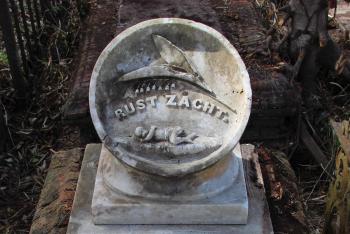Glossaries
| Term | Definition |
|---|---|
| lamb | The sacrificial animal in the religions of the ancient Near East and adopted by the early Christians as the symbol of the sacrificial Christ. The lamb as Christ's symbol is justified by the fact that John the Baptist calls Christ the Lamb of God (Agnus Dei). (John 1:29). The lamb, depicted with a cross and nimbus, is the symbol of the sacrificial death of Christ and of purity and innocence. |
| laurel wreath | A laurel wreath made of bay leaves is a symbol of eternal life, eternal friendship, victory, fame and tribute through the green leaves. The oldest meaning of laurel is that of cleanliness (Apollo). A skull with a laurel wreath symbolizes the reign of death over the living. |
| lily | Symbol of purity and cleanliness. especially associated with Mary and virgin saints. The Archangel Gabriel, who announced the birth of Jesus to Mary, is usually depicted with a lily. As a funerary symbol, the white lily is found - sometimes broken - on children's graves or graves of young girls. In addition, the lily is also a symbol of Christian mercy. |
| lily of the valley |
The lily of the valley symbolizes purity and simplicity. It is one of the earliest spring flowers and heralds spring. This made the plant a symbol for the coming of Christ. As a symbol of purity, it can be found on funerary monuments for children. |
| lion | In the European Middle Ages, the lion was a symbol of the Resurrection because, according to the bestiaries (medieval descriptions of animals based on ancient writings), the cubs lay dead for three days after birth, until their father brought them to life by feeding them the face to breathe. The winged lion, an apocalyptic animal, symbolizes the evangelist Mark. "And in the midst of the throne, and round about the throne, were four living beings full of eyes in front and behind. And the first being was like a lion, and the second being like a calf, and the third being had the face of a man, and the fourth being was like a flying eagle." (Revelation 4: 6-7 (KJ)). In European heraldry, the lion is the most common heraldic animal next to the eagle. Because the lion, as 'king of the beasts', embodies warriorism and power, he was often taken up in arms in the Middle Ages. In medieval funerary monuments the lion can often be seen at the feet of the knight, who is depicted lying on his back. |



